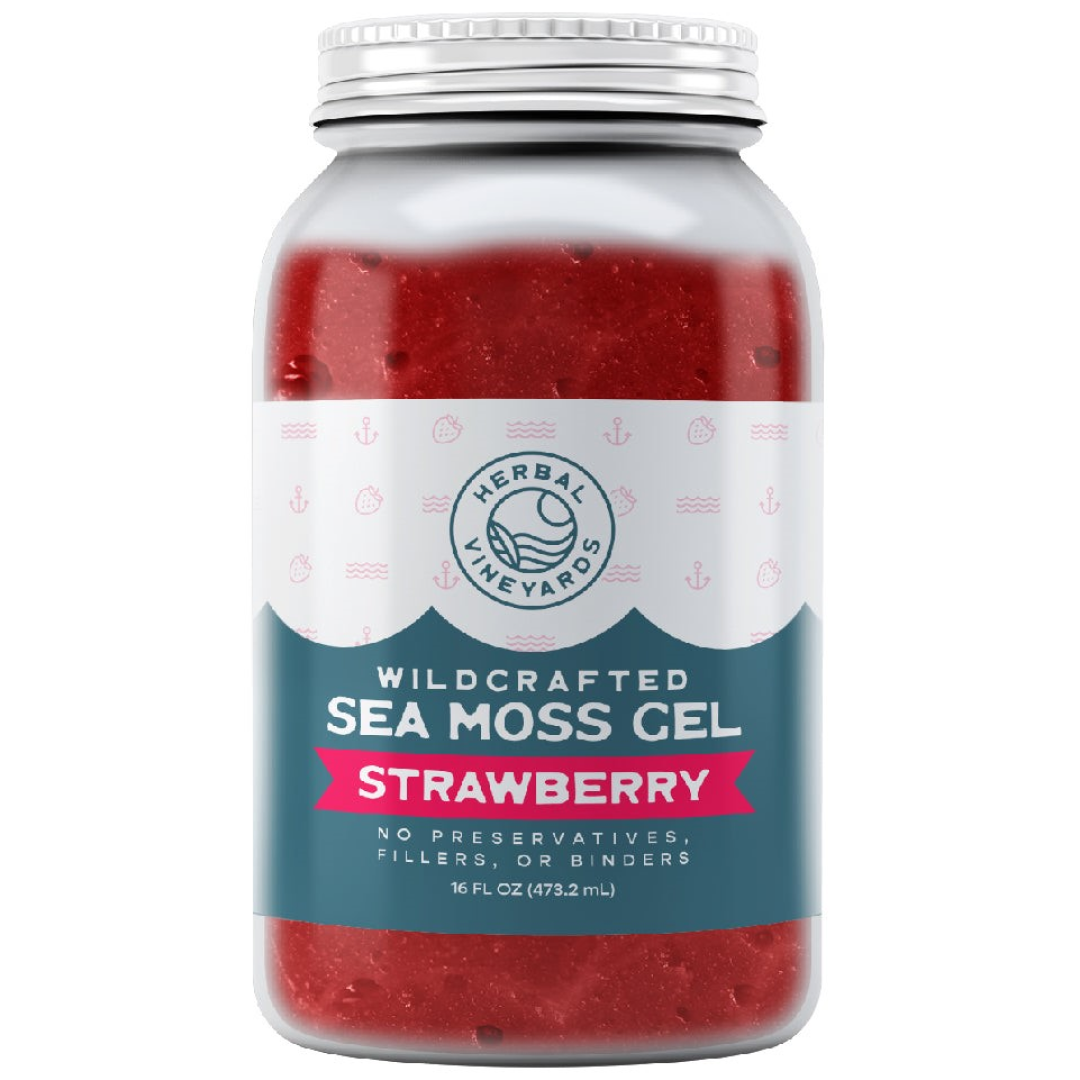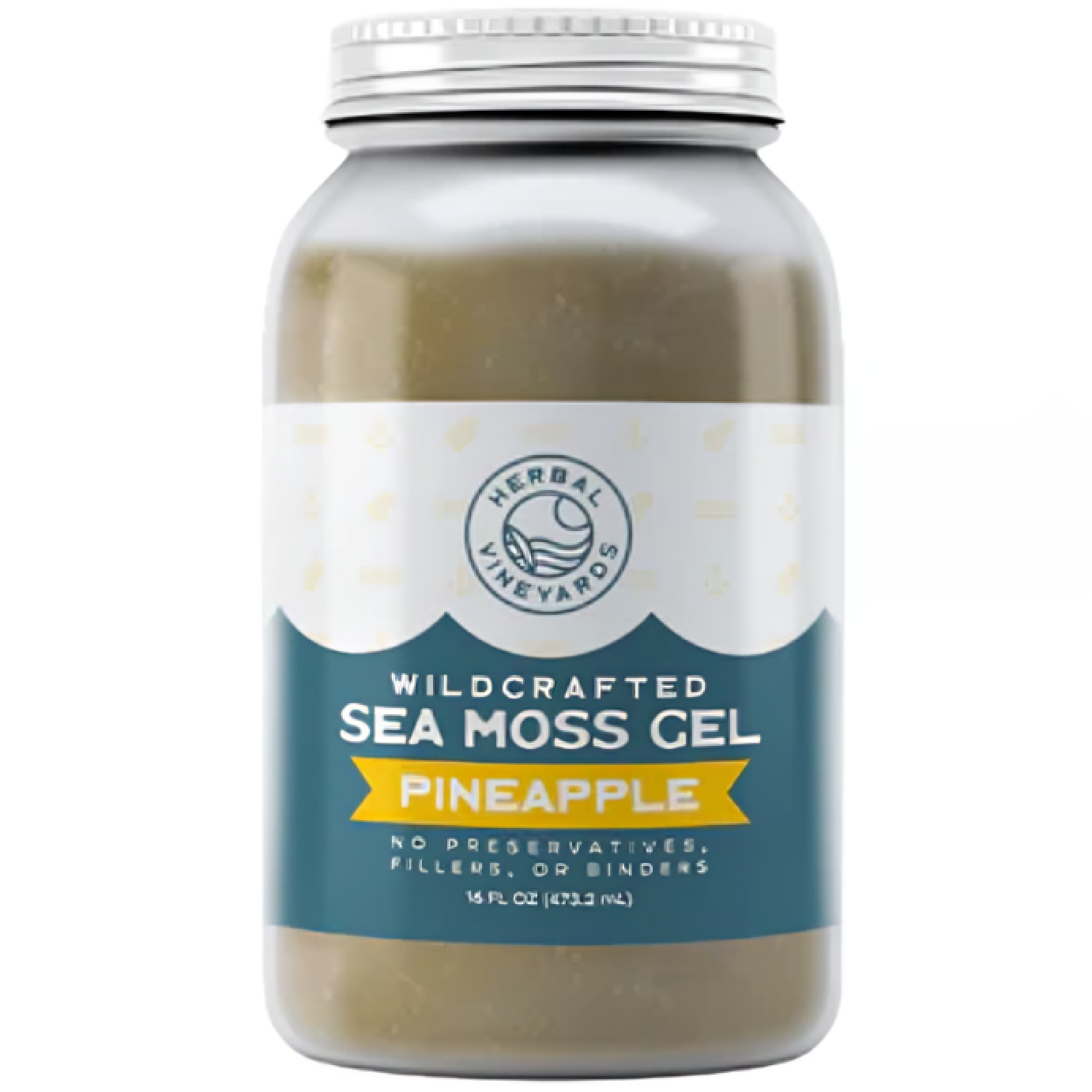Sea Moss vs. Irish Moss: Key Differences & Benefits
Are you trying to stay on top of the latest trends in the health world? You must have heard about the powerful health effects of different types of seaweed. Seaweed contains essential compounds used in medicine and pharmaceuticals because they can fight against certain cancer cells without harming your healthy cells.
Among them, two types of seaweed are increasingly discussed: sea moss and Irish moss. Practically, Irish Moss is the same as Sea Moss. They are two different plants that provide similar health benefits. But what's the difference between the two of them? Let's learn about the differences and their health benefits.
What is Sea Moss?
Sea moss is broad, more stick-like seaweed. It has a scientific name like Eucheuma and Gracilaria, which grow in more tropical climates such as Southern Asia, the Caribbean, and Southern Africa.
Sea Moss is made up of fatty acids, sterols, agar, amino acids, and phenolic compounds. Most people use sea moss gel because it provides 80% of the world's agar, a gel-forming substance used in food and cosmetics.
People get confused between sea moss and Irish moss for various reasons. For example, Irish immigrants in Jamaica use Jamaican purple sea moss and call it Irish Moss, leading to the terms being used interchangeably.
Additionally, the species - Gracilaria can be purple. It is mistaken for the dark purple Irish moss. Gracilaria sea moss grows year-round on rocks and is farmed on ropes in the ocean, making it abundant and widely consumed.
Also Read: Is Sea Moss Good For Cancer
Health Benefits of Sea Moss
1. Weight Loss
Sea Moss helps with losing weight, and its potential lies in its content of high fiber. When you consume fiber, it makes you feel full, which is why high-fiber food helps you lose weight.
2. Iodine
It is an important part of your diet because your body can't produce it on its own. If you have a lower level of iodine, you can consider adding Sea Moss to your diet. It can be a great way to address the deficiency.
3. Gut Health
It is one of the most essential health makers because your gut is responsible for ensuring the absorption of the needed nutrients from your food. Consuming Sea Moss can be a great way to keep your gut healthy.
It is a high-fiber food, which means it is Prebiotic. These foods help feed the good bacteria that live in your gut while helping it function properly.
4. Immunity
The benefit is quite linked with the gut health benefits. Better gut health means better immunity. Additionally, it is rich in iron and other antioxidants, so consuming Sea Moss can boost your immunity.
5. Muscle Building
Sea moss features taurine, which is an amino acid linked with muscle-building. So, if you are trying to get the most out of your gym routine, Sea Moss is what you need to see that more significant difference.
What is Irish Moss?
Irish Moss is scientifically known as Chondrus Crispus. It is a seaweed with flat, fan-like leaves. The leaves are dark purple, but some people bleach them in the sun which gives it a gold color.
Irish Moss grows on rocks and tide pools in the colder regions of the North Atlantic Ocean, such as Canada, the British Isles, and Maine. People living in Ireland were the first to highlight Irish Moss's use during the Irish potato famine of 1845-1849.
During this time, most people were starving and had no food. They turned to the ocean and found Chondrus Crispus, also known as Irish Moss. This sea vegetable greatly helped them survive.
Chondrus Crispus is made with the use of amino acids, proteins, carrageenan, and minerals such as sulfur and zinc. The carrageenan you get from the Irish Moss is not a solution in water. It has gel-like properties that make it a good thickening agent for food and drinks.
Health Benefits of Irish Moss
1. Helps with respiratory illness - coughs, bronchitis, colds, Tuberculosis & viruses
Irish Moss has been used in Ireland for centuries to soothe the body's mucous membranes. It was used to make traditional teas and cough medicines to treat bronchitis, colds, and chronic cough.
The soothing property, also known as demulcent, helps with respiratory conditions like Tuberculosis, cough, and pneumonia.
2. Helps with weight loss
Irish Moss is linked with weight loss. This high iodine content naturally occurs in seaweed and supports thyroid health, promoting healthy metabolism. Like many other seaweeds, Irish Sea Moss has very few calories and is not fat, and the fiber provides a feeling of fullness.
3. Goes well with heart health
Omega-3 fatty acids are essential for a healthy heart. Most Seaweeds, such as Irish Moss, contain these crucial elements. Fish is known as a source of fatty acids consumed from - seaweeds.
4. Works to stabilize blood sugar
Irish Moss contains a pigment known as fucoxanthin. It acts as an antioxidant for humans. Studies show that fucoxanthin can prevent various lifestyle-related diseases, such as cancer, diabetes, cardiovascular disease, and other chronic diseases, including obesity.
Also Read: Psoriasis and Sea Moss
Sea Moss and Irish Moss - How Do They Differ?
Typically, Europeans know this seaweed as "Irish Moss," while Americans call it "Sea Moss." They serve the same purpose and are used as the base ingredients. The two main types of nutrition are Chondrus Crispus and Genus Gracilaria.
Chondrus Crispus is found on the Atlantic coasts of Europe and North America. The Genus Gracilaria is typically grown in Asia, Africa, South America, and Oceania. The seaweed’s color can vary depending on how they are dried. When you dry it in the sun, it becomes lighter, and when you dry it indoors, it becomes darker, usually purple or brown.
Both seaweed-sea moss and Irish moss are known as red algae, rich in proteins that create collagen in the body. Collagen is linked to joint and bone health, healthy skin, and heart health.
Do Sea Moss and Irish Moss Grow Naturally or Farmed?
Both seaweeds can grow naturally. However, farmers tried to farm it in different parts of the world. Farming of Irish Moss has proved unprofitable, so seaweed farmers avoided the process. Most of the Irish sea moss in the market is wildcrafted from the ocean.
Sea moss grows naturally in the ocean year-round. Because it is easy to cultivate, most companies farm sea moss to meet the higher demand. More than 90% of the sea moss in the market is farmed in Africa, Southeast Asia, or the Caribbean.
Farmed sea moss are pool-grown, often known as fake sea moss or ocean-farmed. If you want to grow sea moss in the pools, farmers try to mimic ocean conditions, such as lighting and water movement in the tanks. The process is expensive and not economically viable as compared to the ocean-grown sea moss. Therefore, pool-grown sea moss is mostly experimental, with only a few companies succeeding.
Most sea moss farming is done in the ocean, where farmers use sheltered areas such as bays to grow seaweed on nets and ropes. The method is preferred due to lower costs and the wider space available in the ocean.
Conclusion
Sea moss and Irish moss are different species of seaweed, but they are also different in terms of appearance, availability, and smell.
Additionally, sea moss sourced from the ocean has more nutritional value than pool-farmed sea moss.
Both sea moss and Irish moss provide the same nutritional benefits when you consume them. If you are unsure which one to choose, consume both mosses and determine which works well for you.







